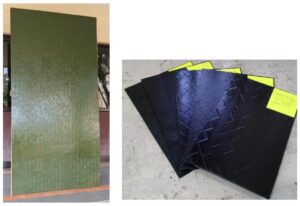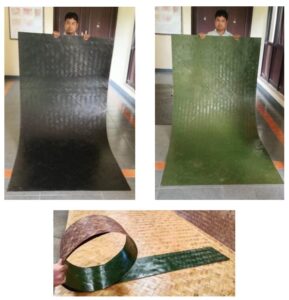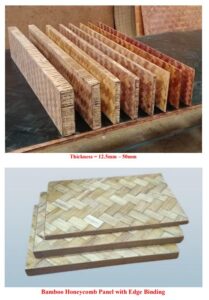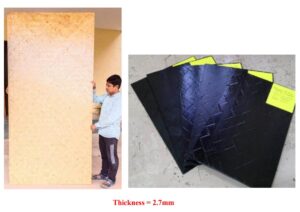1. Executive Summary
This project report provides an in-depth analysis of establishing a Bamboo Charcoal and Briquette Production Unit. With the growing emphasis on sustainable energy solutions and eco-friendly alternatives to traditional fuels, bamboo charcoal and briquettes are gaining popularity. The project highlights production processes, market potential, and financial feasibility, presenting a viable business opportunity.
2. Project Overview
2.1 Objectives
- To produce high-quality bamboo charcoal and briquettes as eco-friendly fuel alternatives.
- To promote the utilization of renewable bamboo resources.
- To create employment opportunities and contribute to sustainable development.
2.2 Scope
The project focuses on producing:
- Bamboo charcoal for industrial and household use.
- Bamboo briquettes for heating and cooking applications.
3. Market Analysis
3.1 Industry Overview
- The global charcoal and briquette market is expanding due to the demand for renewable and clean energy sources.
- Bamboo charcoal is preferred for its higher calorific value and lower environmental impact compared to traditional wood charcoal.
3.2 Target Market
- Households using eco-friendly fuel alternatives.
- Industrial units requiring high-calorific-value fuels.
- Export markets focusing on sustainable energy solutions.
3.3 Competitive Analysis
- Competitors include producers of wood-based charcoal and synthetic briquettes.
- Bamboo products offer advantages such as sustainability, faster renewability, and eco-friendliness.
4. Technical Feasibility
4.1 Location and Infrastructure
- Proposed location: Proximity to bamboo-growing regions such as Assam, Karnataka, or Tamil Nadu.
- Facility requirements: 5,000 sq. ft. for production, storage, and administrative areas.
4.2 Production Process
- Raw Material Collection: Procuring bamboo from local suppliers or plantations.
- Carbonization: Heating bamboo in a controlled environment to produce charcoal.
- Crushing and Mixing: Crushing charcoal into fine powder and mixing it with a binder.
- Briquette Formation: Compressing the mixture into briquette shapes using specialized machinery.
- Drying and Packaging: Drying briquettes and packaging them for distribution.
4.3 Machinery and Equipment
- Carbonization kilns or furnaces.
- Charcoal crushing machines.
- Briquette-making machines.
- Drying ovens.
- Packaging equipment.
5. Organizational Structure
5.1 Management Team
- Project Manager: Overseeing overall operations and strategy.
- Production Supervisor: Managing manufacturing processes.
- Quality Controller: Ensuring product standards.
- Sales and Marketing Executive: Driving market penetration and sales.
5.2 Workforce Requirements
- Skilled labor for operating machinery: 10 workers.
- Unskilled labor for material handling and packaging: 8 workers.
6. Financial Analysis
6.1 Capital Requirements
- Land and Building:
- Machinery and Equipment:
- Raw Material (Initial Stock):
- Working Capital:
- Miscellaneous Expenses:
- Total Initial Investment:
6.2 Revenue Projections
- Estimated monthly production:
- Average selling price per ton:
- Monthly revenue:
- Annual revenue:
6.3 Cost Structure
- Raw materials:
- Labor:
- Overheads (utilities, maintenance, etc.):
- Marketing and distribution:
- Profit margin:
6.4 Break-Even Analysis
- Break-even point: Achieved within 24-28 months of operation.
7. Risk Assessment and Mitigation
7.1 Risks
- Fluctuation in bamboo supply or prices.
- Competition from alternative fuel sources.
- Environmental regulations affecting production.
7.2 Mitigation Strategies
- Develop long-term contracts with bamboo suppliers.
- Emphasize product quality and eco-friendly benefits.
- Comply with local and international environmental standards.
8. Marketing and Sales Strategy
8.1 Branding and Positioning
- Highlight the renewable and eco-friendly nature of bamboo charcoal and briquettes.
8.2 Distribution Channels
- Direct sales to households, industries, and exporters.
- Partnerships with retailers and fuel distributors.
- Online sales platforms for wider reach.
8.3 Promotion Strategies
- Social media campaigns on sustainable energy.
- Participation in green energy expos and fairs.
- Collaborations with environmental organizations.
9. Sustainability and Environmental Impact
- Bamboo cultivation supports reforestation and carbon sequestration.
- Production of bamboo charcoal reduces reliance on traditional wood-based fuels.
- By-products like bamboo vinegar can be utilized in agriculture or skincare.





